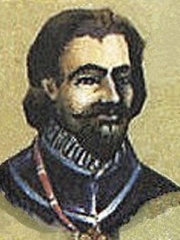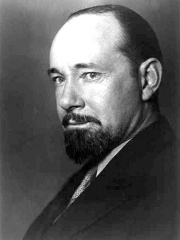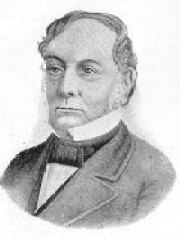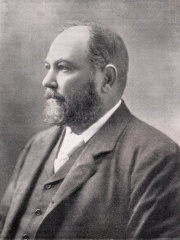



The Most Famous
EXPLORERS from Australia
Top 5
The following people are considered by Pantheon to be the most legendary Australian Explorers of all time. This list of famous Australian Explorers is sorted by HPI (Historical Popularity Index), a metric that aggregates information on a biography's online popularity.

1. Luís Vaz de Torres (1565 - 1614)
With an HPI of 70.21, Luís Vaz de Torres is the most famous Australian Explorer. His biography has been translated into 29 different languages on wikipedia.
Luís Vaz de Torres (Galician and Portuguese), or Luis Váez de Torres in the Spanish spelling (born c. 1565; fl. 1607), was a 16th- and 17th-century maritime explorer and captain of a Spanish expedition noted for the first recorded European navigation of the strait that separates the Australian mainland from the island of New Guinea, and which now bears his name (Torres Strait).

2. Hubert Wilkins (1888 - 1958)
With an HPI of 52.54, Hubert Wilkins is the 2nd most famous Australian Explorer. His biography has been translated into 20 different languages.
Sir George Hubert Wilkins MC & Bar (31 October 1888 – 30 November 1958), commonly referred to as Captain Wilkins, was an Australian polar explorer, ornithologist, pilot, soldier, geographer, and photographer. He was awarded the Military Cross after he assumed command of a group of American soldiers who had lost their officers during the Battle of the Hindenburg Line, and became the only official Australian photographer from any war to receive a combat medal. He narrowly failed in an attempt to be the first to cross under the North Pole in a submarine, but was able to prove that submarines were capable of operating beneath the polar ice cap, thereby paving the way for future successful missions. The US Navy later took his ashes to the North Pole aboard the submarine USS Skate on 17 March 1959.

3. Hamilton Hume (1797 - 1873)
With an HPI of 51.10, Hamilton Hume is the 3rd most famous Australian Explorer. His biography has been translated into 15 different languages.
Hamilton Hume (19 June 1797 – 19 April 1873) was an early explorer of the present-day Australian states of New South Wales and Victoria. In 1824, along with William Hovell, Hume participated in an expedition that first took an overland route from Sydney to Port Phillip (near the site of present-day Melbourne). Along with Sturt in 1828, he was part of an expedition of the first Europeans to find the Darling River.

4. John Forrest (1847 - 1918)
With an HPI of 47.93, John Forrest is the 4th most famous Australian Explorer. His biography has been translated into 18 different languages.
Sir John Forrest (22 August 1847 – 2 September 1918) was an Australian explorer and politician. He was the first premier of Western Australia (1890–1901) and a long-serving cabinet minister in federal politics. Forrest was born in Bunbury, Western Australia, to Scottish immigrant parents. He was the colony's first locally born surveyor, coming to public notice in 1869 when he led an expedition into the interior in search of Ludwig Leichhardt. The following year, Forrest accomplished the first land crossing from Perth to Adelaide across the Nullarbor Plain. His third expedition in 1874 travelled from Geraldton to Adelaide through the centre of Australia. Forrest's expeditions were characterised by a cautious, well-planned approach and diligent record-keeping. He received the Patron's Medal of the Royal Geographical Society in 1876. Forrest became involved in politics through his promotion to surveyor-general, a powerful position that entitled him to a seat on the colony's executive council. He was appointed as Western Australia's first premier in 1890, following the granting of responsible government. The gold rushes of the early 1890s saw a large increase in the colony's population and allowed for a program of public works, including the construction of Fremantle Harbour and the Goldfields Water Supply Scheme. Forrest's government also passed a number of social reforms, maintaining power through several elections in an era before formal political parties. His support for Federation was crucial in Western Australia's decision to join as an original member. In 1901, Forrest was invited to join Prime Minister Edmund Barton's inaugural federal cabinet. He was a member of all but one non-Labor government over the following two decades, serving as Postmaster-General (1901), Minister for Defence (1901–1903), Minister for Home Affairs (1903–1904), and Treasurer (1905–1907, 1909–1910, 1913–1914, 1917–1918). He helped shape Australia's early defence and financial policies, also lobbying for the construction of the Trans-Australian Railway, a pet project. Forrest served briefly as acting prime minister in 1907 and in 1913 was defeated for the leadership of the Liberal Party by a single vote. He was nominated to the peerage in 1918 by Prime Minister Billy Hughes, but died on his way to England before the appointment could be confirmed.

5. Tim Flannery (b. 1956)
With an HPI of 45.52, Tim Flannery is the 5th most famous Australian Explorer. His biography has been translated into 21 different languages.
Timothy Fridtjof Flannery (born 28 January 1956) is an Australian mammalogist, paleontologist, environmentalist, conservationist, explorer, author, science communicator, activist, and public scientist. He is especially known for his 1994 book The Future Eaters, on the natural history of Australia, which was adapted for television in 2006, and his 2006 book The Weather Makers, about the effects of climate change in Australia. As a researcher, Flannery had roles at several universities and museums in Australia, specialising in fossil marsupials and mammal evolution. He made notable contributions to the palaeontology of Australia and New Guinea during the 1980s, including reviewing the evolution and fossil records of Phalangeridae and Macropodidae. While mammal curator at the Australian Museum, he undertook a survey of the mammals of Melanesia, where he identified 17 previously undescribed species. He has published widely on the systematics, zoogeography, and biochronology of the mammals of Australia and New Guinea. He has since written many more books on natural history and environmental topics, including Throwim Way Leg and Chasing Kangaroos, and has appeared on television and in the media. He was awarded Australian of the Year in 2007 for his work and advocacy on environmental issues. Flannery became prominent for his role in communication, research and advocacy around the issue, particularly in his native Australia. In 2011, he was appointed the Chief Commissioner of the Climate Commission, a federal government body providing information on climate change to the Australian public, until its abolition by the Abbott government in 2013. Flannery and other sacked commissioners later formed the independent Climate Council, which continues to communicate independent climate science to the Australian public. An environmentalist and conservationist, Flannery is a supporter of climate change mitigation, renewable energy transition, phasing out coal power, and rewilding.
People
Pantheon has 5 people classified as Australian explorers born between 1565 and 1956. Of these 5, 1 (20.00%) of them are still alive today. The most famous living Australian explorers include Tim Flannery. The most famous deceased Australian explorers include Luís Vaz de Torres, Hubert Wilkins, and Hamilton Hume.
Living Australian Explorers
Go to all RankingsDeceased Australian Explorers
Go to all RankingsLuís Vaz de Torres
1565 - 1614
HPI: 70.21
Hubert Wilkins
1888 - 1958
HPI: 52.54
Hamilton Hume
1797 - 1873
HPI: 51.10
John Forrest
1847 - 1918
HPI: 47.93
Overlapping Lives
Which Explorers were alive at the same time? This visualization shows the lifespans of the 3 most globally memorable Explorers since 1700.

